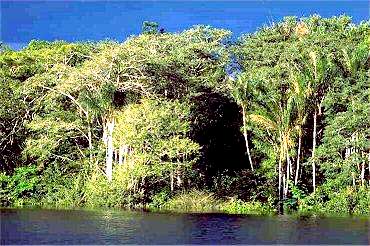The humid tropics encircle the Earth’s equator and extend over 2,000 Km to the north and to the south, roughly paralleling the Tropics of Capricorn and Cancer.
This region contains approximately 20% of the world’s land area, contains parts of as many as 60 countries and is characterized by warm temperatures, abundant rainfall and extreme weather conditions, including cyclones and monsoons.

Although the average annual rainfall is high in most tropical regions, often exceeding several metres per year, its distribution in time and space can be highly variable. Madagascar, for example, has an annual average rainfall of 2-4 metres along the east coast, whereas the west coast frequently receives less than one metre.
Some of the world’s largest rivers, including the Amazon, Orinoco, Ganges-Brahmaputra, Mekong, Niger and Congo, are located in the humid tropics.
Only about 20% of the soil in humid tropics can support agriculture, and most of this area is already in use.
Some 14 million ha of tropical forests are destroyed every year.
Bangladesh, Haiti, and India had all lost 100% of their primary rainforest by 1988, and Asia as a hole retains just 6% of its original rainforest.
Wetlands have similar functions and attributes at all latitudes; however, they can be particularly important in the humid tropics because of the unique and frequently extreme meteorological conditions of this region, which include monsoons and cyclones. Wetlands play an important role in regulating the tropical hydrologic cycle, moderating river flows and buffering tropical coastlines from storm damage.
Many valuable forestry products are harvested from tropical wetlands. These include fuel-wood (often used for making charcoal), timber, thatching, reeds, peat, bark, resins, honey and medicines.
Information from:
the publication ‘Wetlands of the humid tropics’ PDF format – 5.3 MB
‘The Tropical Rain Forest’ website
Source: UNESCO Water Portal, July 2006

